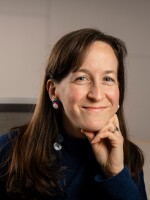Governor Jerry Brown has made fighting climate change a major priority for California. One of the most recent laws he signed was Senate Bill 32, which requires the state to dramatically reduce its greenhouse gas emissions. Called “critical” and “far-reaching,” it’s been heralded by some as one of the most ambitious climate regulations in the world--but not everyone thinks the law will be good for California.
Joey Airoso has two kids and close to 3,000 mouths to feed. He’s a dairy farmer in rural Tulare County.
Three thousand cows produce a lot of milk. They also produce a lot of poop. At the end of each lane of cows, there’s a big water spigot for cleaning the manure out. “This is what we call a manual flush system,” says Airoso, opening the spigot and sending water rushing under hundreds of heifers’ feet. “We do it twice a day, and it basically runs that water that comes out of the chiller system and it flushes this lane.”
That slurry of water and manure drains into large open lagoons, where the solid manure settles out and the water is eventually used for irrigation.
But Airoso may not be able to flush his lanes out for much longer. That’s because lagoons release methane, one of the main targets of new climate legislation from Governor Jerry Brown. Under Senate Bill 32 and a few companion bills, which Brown signed into law earlier this month, California will have to cut its greenhouse gas emissions practically in half by the year 2030.
Methane is a greenhouse gas that’s many times more potent than carbon dioxide, and it poses health risks as a precursor to other pollution. Unfortunately for dairy farmers, cows happen to produce a lot of methane. So, for them, this law could be bad news, and complying with it could require extensive renovations that many dairy farmers can’t afford.
According to Airoso, the message from Governor Brown is pretty clear. “What I'm hearing? He doesn't want dairy farms in California; he may not want ag in California,” Airoso says. “This has riled people up about as much as anything. And, frankly, it's like getting kicked in the teeth.”

Airoso is a fourth-generation dairy farmer in Pixley. He produces milk with his wife, his parents, and his 29-year-old son. The family still owns the farm his great-grandfather bought in the 1930s, along with a bigger, more efficient operation they built 10 years ago.
When it’s milking time, the cows walk onto what looks like a slow-moving, high-tech carousel equipped with suction cups and cris-crossed by tubes flowing with milk. “This is called a rotary milking parlor,” Airoso says. “It takes about 8 minutes to take a turn; we milk about 400 cows an hour.”
Each cow produces around 20,000-30,000 pounds of milk per year, all of which Airoso sells to the dairy company Land O’Lakes.
Close to two million cows graze in California, over 80 percent of which are in the San Joaquin Valley. And those cows produce methane from both ends. Manure is a problem in lagoons like Airoso’s, where methane is produced by the solids fermenting underwater without exposure to air.
But cows burp methane, too. They produce it in their first stomach, where they digest grass, hay, corn husks and other fibrous materials that most other animals can’t eat.
Those burps and poop add up. “The biggest source of methane emissions in the state by far are dairies,” says Ryan McCarthy, an advisor at the California Air Resources Board. “Forty-five percent of methane emissions in California come from dairies.”
The largest share of that 45 percent is manure. “We're proposing to really tackle manure management at California dairies,” says McCarthy.
The Air Resources Board proposed cutting methane emissions from manure by 75 percent by 2030. Ultimately, Senate Bill 1383 mandated a reduction of only 40 percent.

Here in the San Joaquin Valley, reducing methane could help more than the climate. Kevin Hamilton is the CEO of the Central California Asthma Collaborative, and he says methane is a precursor to one of the Valley’s nastiest pollutants. “Methane, when it heats up and starts to split apart, is going to cause some ozone production because of the way the chemicals come back together again in the air,” he says.
Hamilton says, with this legislation, the state may be facing a crossroads. “Either move out the people or move the cows out; you're kind of in a situation where you have to consider one of the two.”
He may not be far off. Back in Pixley, Airoso points to a picture of his great-grandfather’s farm.
“That farm there? Forget it,” he says. “It's not going to be adaptable to the methane regulation. The farm that was built in 1938 will not be able to operate under the regulations that he signed yesterday.”
There’s a possible solution, though, and it’s right down the street from Airoso’s Farm. It’s widely used in other parts of the world and it could help the state’s entire dairy industry. What it is, and how it works, we’ll discuss in a later story.
*An earlier version of this story incorrectly stated that methane is a precursor to particulate matter; and that the Air Resources Board’s recommendations of 75 percent methane emission reductions from manure and additional methane reductions from cow burps were signed into law.







